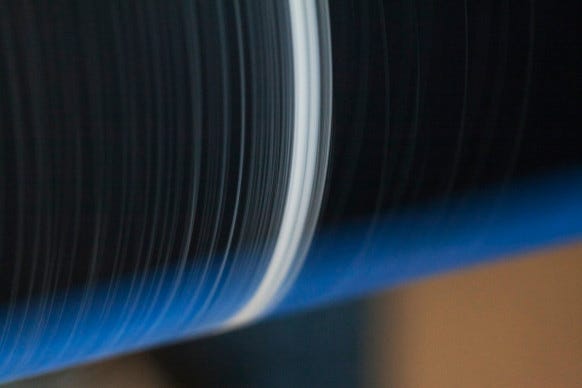September 24, 2015
Who hasn't read a Spider-Man comic book and watched the web slinger save someone with his super strong homemade webbing? It turns out manmade silk that is stronger than steel is closer than we think.
Jordan Brandes
|
Engineered spider silk fibers wrapped around a roller. Image from Bolt Threads. |
Easily marketable synthetic spider silk has been the holy grail of bioengineers for a long time and for good reason: it is five times stronger than steel and three times tougher than Kevlar.
Earlier this week, a California startup called Bolt Threads announced that it can use synthetic-biology techniques to engineer proteins that can be spun into fibers with properties they can alter depending on their customers' needs. More to the point, this is the first case of it being done on large scale.
Using real spiders has been considered impractical since the arachnids are, by nature, cannibalistic and therefore cannot be bred on a large scale. Several years ago, scientists even came up with genetically modified "spider goats" that produced spider silk in their milk.
Scientists continue to find different methods to create spider silk in the lab. Recently, a startup has said they have come up with a new way to produce the material that is also able to improve its properties.
The team uses genetically engineered yeast brew silk proteins that are then spun into fibers. Thanks to customization the properties of the fibers can be adjusted by altering the temperature, tension and spinning process during creation. The company is hoping to put the high performance material in sport shirts and bras by 2016. Perhaps medical device applications will follow after that?
Though Dan Widmaier, PhD has been developing the company since 2009 along with his partner David Breslauer, PhD the concept is not a new one. Just a few years before Widmaier, in 2006, Kraig Biocraft Laboratories introduced their version of synthetic spider silk. Kraig acquired the exclusive right to use the patented genetic sequences for numerous fundamental spider proteins. In June of last year CEO Kim Thompson unveiled the first Monster Silk textile created for commercial use.
Overseas, the German-based AMSilk has been developing a globally unique fiber from recombinant spider silk and presented under the brand name Biosteel. The product can be manufactured as a monofilament or multifilament depending on client needs.
Like Bolt Threads, the spider silk for Biosteel is produced by synthetically producing proteins on to a fiber. Using biotechnology the raw material, initially in powder form, is produced in high quality and in greater qualities than could be achieved using biological spiders. The process is based on findings by Thomas Scheibel, PhD from the University of Bayreuth, which were further developed by AMSilk.
At the moment there is no synthetic spider silk on the market but the race is on among companies around the globe. Multiple companies are estimating prototypes to hit the market by the end of 2015 into early 2016 but whether or not that comes to fruition is anyone's guess.
Once mastered, scientists envision that "This integrated approach provides a general path towards de novo functional network materials with enhanced mechanical properties and beyond (optical, electrical or thermal) as we have experimentally verified," notes Shangcao Lin, PhD of MIT in his paper "Predictive Modelling-based Design and Experiments for Synthesis and Spinning of Bioinspired Silk Fibres" released last year.
Learn more about cutting-edge medical devices at MD&M Philadelphia, October 7-8, 2015. |
Like what you're reading? Subscribe to our daily e-newsletter.
About the Author(s)
You May Also Like



